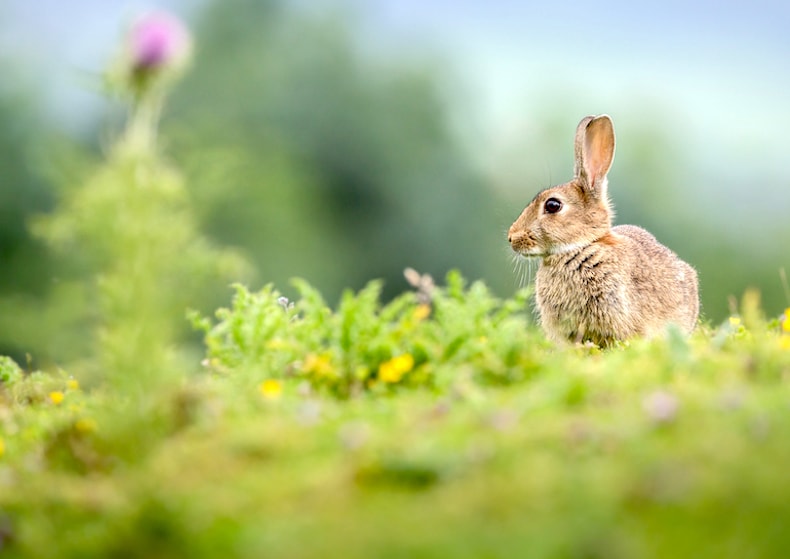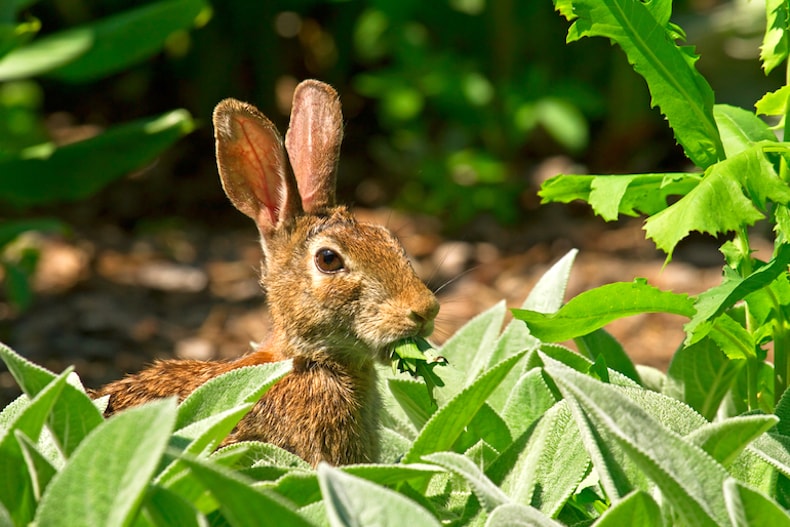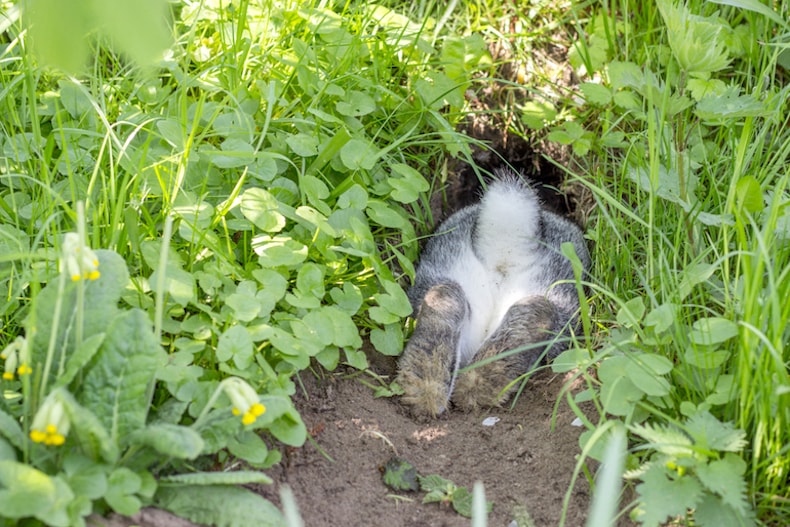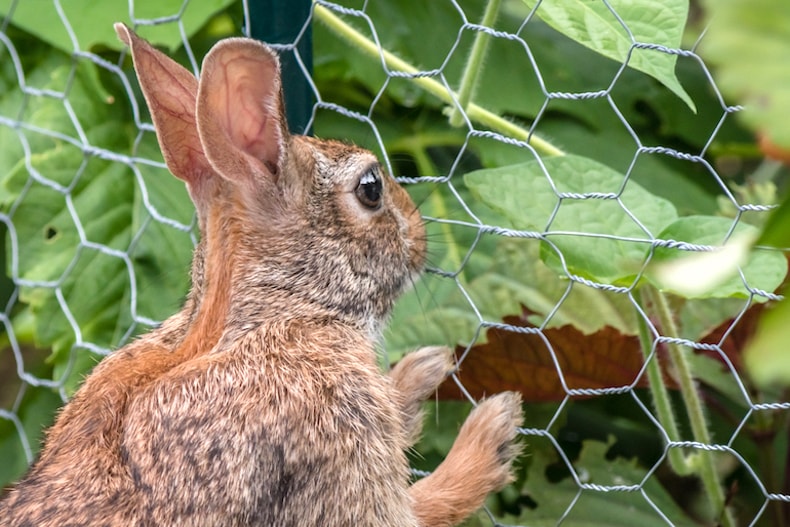Garden pests - Rabbits

Rabbits can cause havoc in your garden
Image: Neil Burton/Shutterstock
Rabbits are a misleadingly adorable addition to local wildlife. With a voracious appetite and enthusiastic breeding habits, they will happily and quickly decimate a garden. Here’s how you can deal with an invasion of these small furry garden pests.
Why are rabbits a problem for gardeners?

Rabbits have no qualms over ruining your veg plot
Image: LorraineHudgins/Shutterstock
Wild rabbits are notorious. They’ll run riot over plants and trees, treating your garden like their very own all-you-can-eat buffet.
They are also prolific breeders. They breed between January and July in particular, but litters of three to six young can be expected throughout the year, with one female rabbit potentially having up to five litters a year.
So if you think you have a rabbit problem, there’s a good chance you may already have a significant population to contend with.
How do I identify rabbit damage?

Keep an eye out for burrows and hollows in your lawn
Image: Cora Mueller/Shutterstock
A flash of a fluffy tail as it bounces into the undergrowth is a sure sign. But if you have suspicions without sightings, keep an eye out for the following tell-tale damage.
- Nibbled foliage, leaves, and shoot tips. Rabbits might eat small herbaceous plants down to ground level, while they can stand on their hind legs to graze plants up to 50cm.
- Chewed bark around the base of trees, particularly young specimens.
- Small, round droppings.
- Tufts of fur caught under fences or gates.
- Small holes and hollows scratched and dug in lawns and flower beds.
Which plants do rabbits eat?
Rabbits are particularly fond of tender young plants. But they will eat a wide range of herbaceous plants, fruits, and vegetables, as well as shrubs and trees.
Early in the year, they will eat grass and clover, and during the colder months, they will subsist on bark and seedlings. In between, they will maraud about the garden, usually eating exactly what you would prefer they didn’t, including carrots, peas, lettuce, apples, and more.
How do I protect my plants and garden from rabbits?

Fencing is your best bet when it comes to keeping rabbits out
Image: Jay Gao/Shutterstock
If you want to stop these furry pests from digging around and eating your plants, you need to restrict their access to them. Here are some effective ways to deal with rabbits.
Install fencing – rabbit-proof physical barriers around your garden should stop rabbits from getting into your garden in the first place. But consider using 2.5cm wire mesh as rabbits can easily chew through plastic. Be sure to sink the mesh into the ground at least 15cm (to stop them burrowing under) and raise it up around 120-140cm high (to prevent them jumping over).
Protect individual plants or beds – where garden fencing is impractical, you can selectively protect small areas, even individual plants, using netting or chicken wire. Pay particular attention to new planting, as rabbits are particularly enamoured of soft new growth.
Protect young trees – rabbits can do considerable damage to trees by stripping the bark from their trunks and gnawing on branches. Plastic or biodegradable tree guards, or wire, can be used to protect trees, but be sure there are no gaps as rabbits are tenacious.
Grow rabbit resistant plants – While rabbits have an impressive appetite, there are plants they dislike. They avoid ornamentals like daffodils, foxgloves, and snowdrops, for example, and they’re not particularly interested in potatoes or onions, including ornamental alliums. But even these aren’t guaranteed to remain free from harm, especially during times of new growth.
Change their environment – Rabbits typically like to make a quick getaway, with areas of damage often concentrated near the edges of gardens. Limit the places they hide by sealing spaces under buildings, trimming plants they could hide under, and clearing away piles of debris. If you find signs of rabbit nesting or gaps in fences, remove them or seal them off.
Use repellents – there are sprays, granules, and other remedies that you can use, but they have varying degrees of success. Be careful not to use them near edible plants as they can be toxic so read the instructions carefully before use.
Enlist the help of professional pest control – it’s an option, should the population be significant. But it’s advisable to seek professional help than attempt to control the rabbit population yourself.
Stay vigilant – rabbits breed like… rabbits. Check your plants for damage regularly and make sure that your fencing hasn’t been breached. Keep an eye out for signs of rabbit damage and be sure to act quickly if you spot any.







